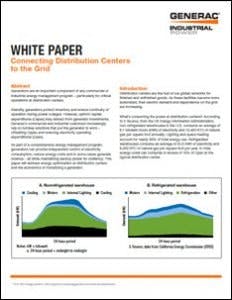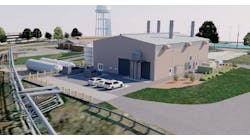A new report from Generac explores energy optimization at distribution centers and the economics of monetizing generators by connecting them to the grid.
Get the full report.
Aging infrastructure means that in many areas of the country electric reliability is not what it should be. Outages at distribution centers can cost upwards of $100,000 per hour at both refrigerated and nonrefrigerated facilities, according to the report. Standby generators provide resiliency by protecting inventory and keeping critical operations running during a power outage, but these “insurance policies” aren’t fully optimized assets. In fact, they’re often considered stranded assets by corporate accountants.
But when generators are a key component in a distribution center’s comprehensive energy management program, they can become a valuable revenue source, according to the report.
The need to offset capital expenditures by reducing operating expenses has been driving innovation in generator utilization, the report states. Typically, 15% of a distribution center’s Opex comes from energy costs. The report explains that “generators can offset utility energy charges through programs such as peak shaving and demand response” as well as other strategies.
“Generators can also [operate] parallel to the grid … which helps to offset Capex.” The report explains that this is “a compelling option to meet environment, social and corporate governance (ESG) objectives.” On-site generation can also relieve stress on the grid through grid support services.
“Aging infrastructure, intermittent renewables and unplanned growth have created congestion on utility distribution systems. These circumstances present an opportunity for distributed generator assets to be utilized in all of the above applications – beyond standby.” — Generac, Connecting Distribution Centers to the Grid
As part of the report, Generac presents a case study of a distribution center in Texas. After working with Generac to design its generator installation, the company enrolled in two Electric Reliability Council of Texas programs: 4 Coincident Peak and Emergency Response Service. The report illustrates how the distribution center’s net return from those two programs is significant enough that it expects to reach payback in about four years.
Working with an experienced partner that can provide a thorough technological and economic analysis can help distribution centers identify the proper generator to reduce operating expenses and offset capital expenses.
Download the full report, Connecting Distribution Centers to the Grid, to further explore the benefits of including generators in a comprehensive energy management program.








